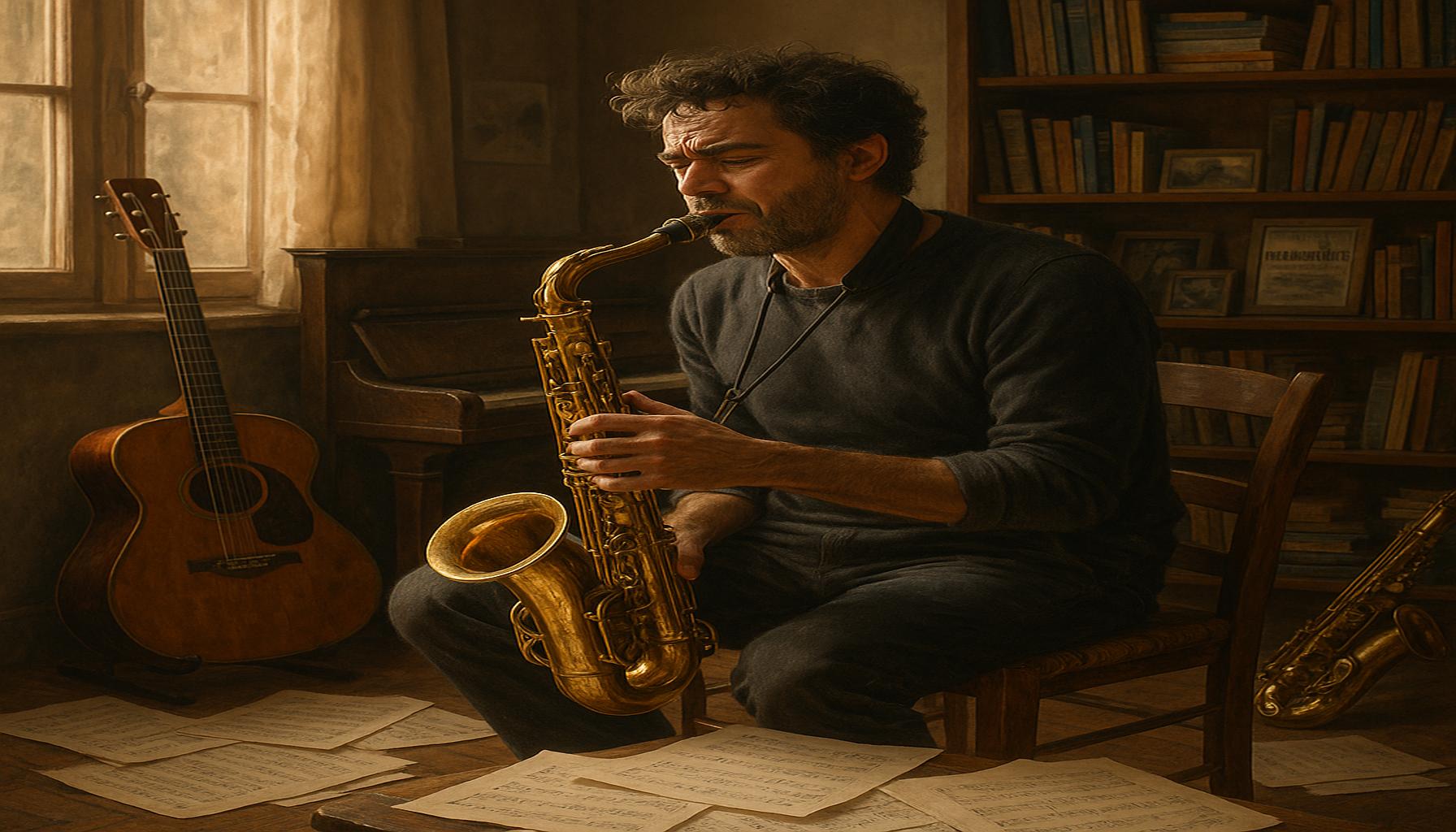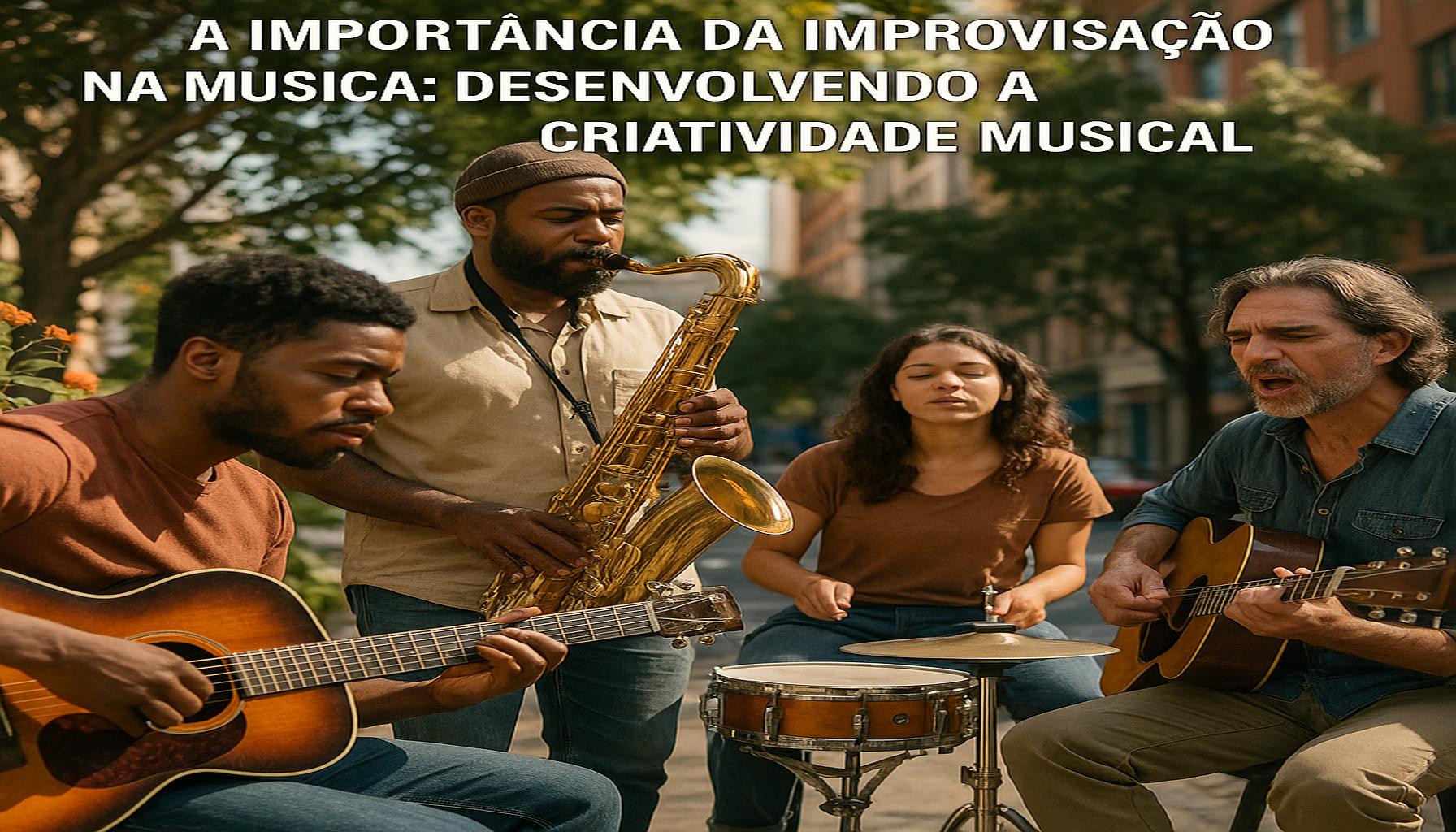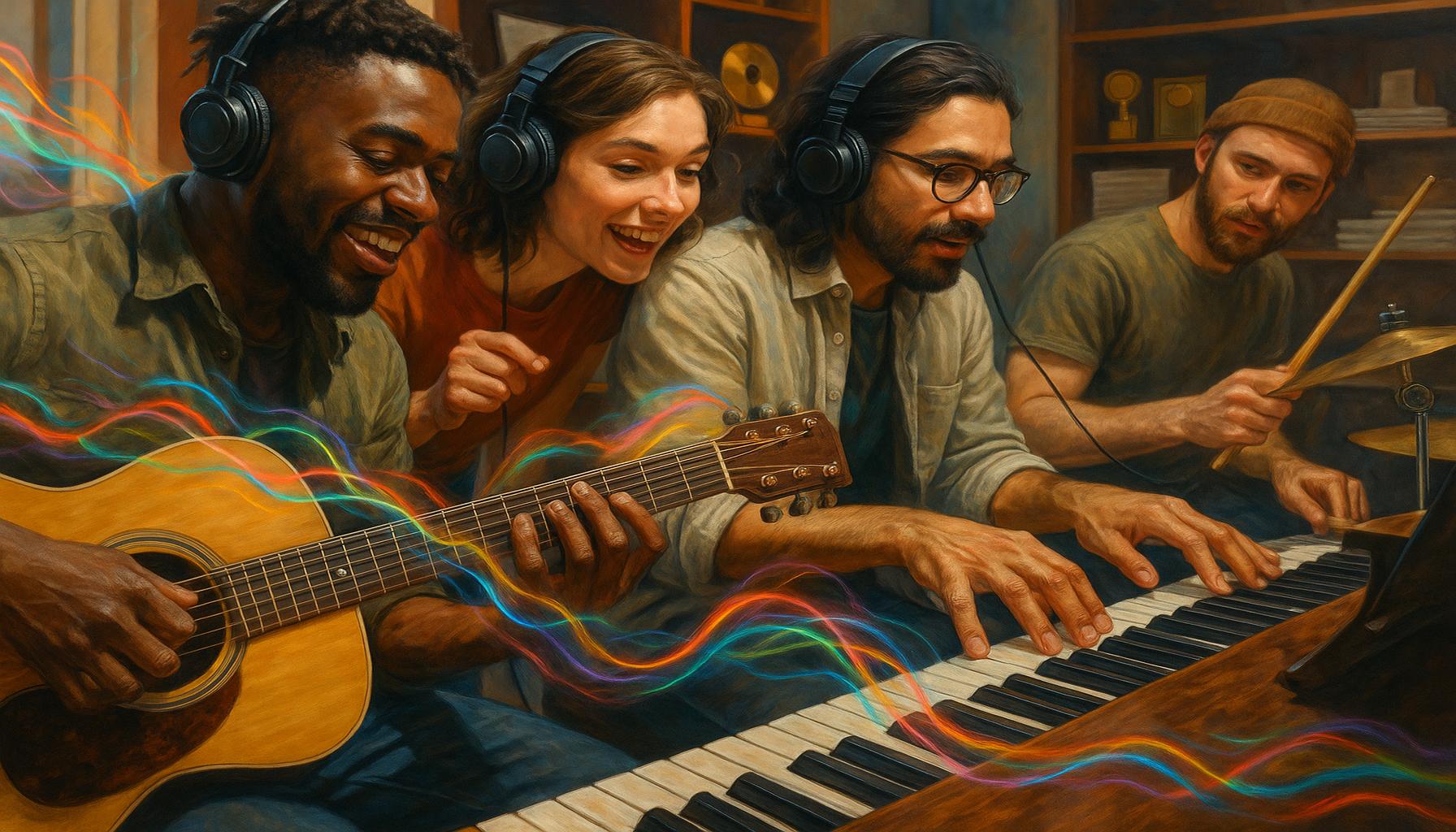How Musical Collaboration Enriches the Creative Process
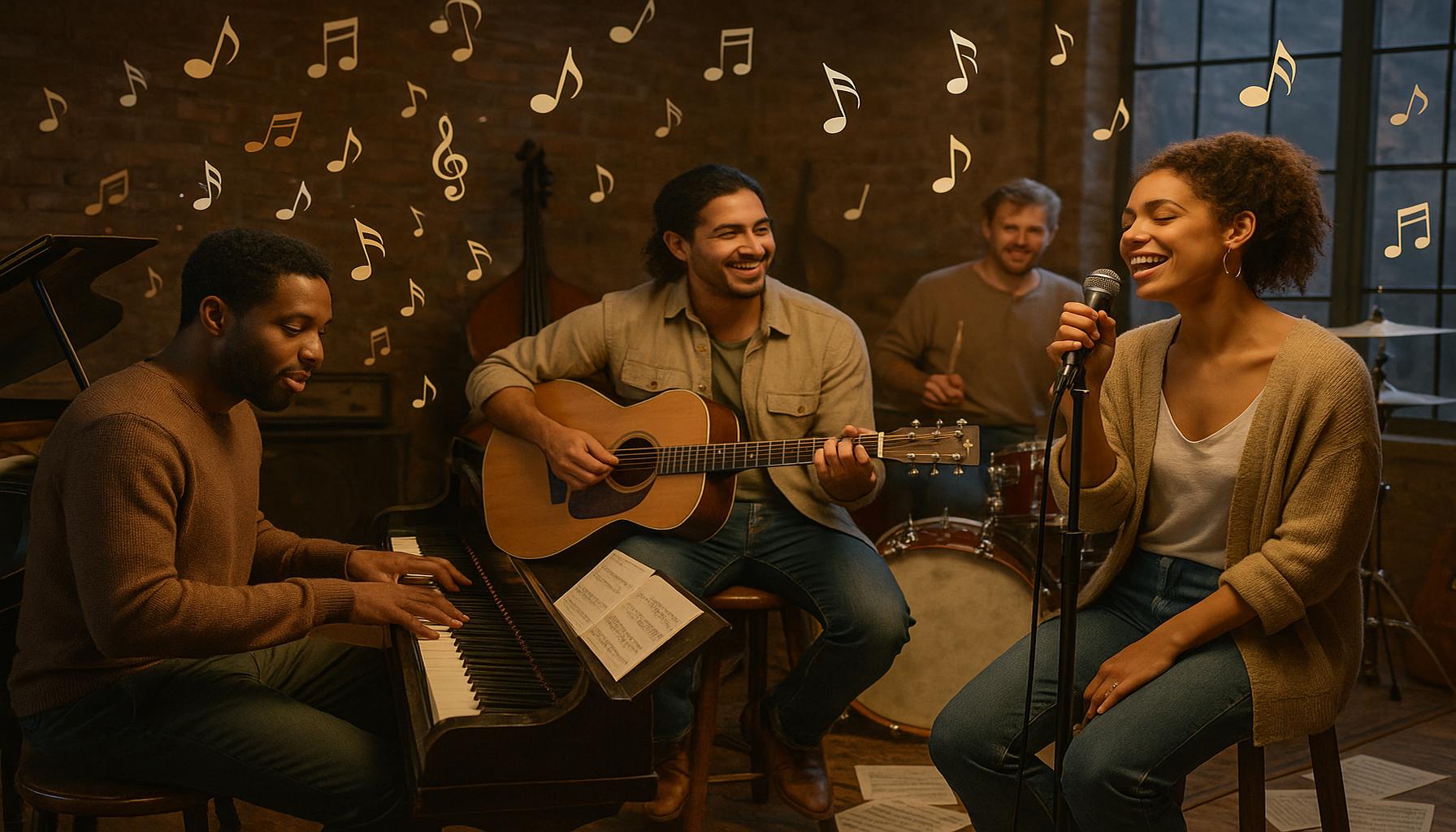
In the ever-evolving world of music, the act of collaboration stands as a powerful catalyst for creativity. Joining forces with other musicians often leads to unexpected innovation, allowing artists to transcend their individual limitations and explore new sonic landscapes. This intersection of ideas not only results in fresh sounds but also fosters personal growth among artists.
As musical genres become increasingly intertwined, collaboration has emerged as a critical component for artistic expression. Working with diverse talents can enhance skills and encourage experimentation, bringing unique perspectives into the creative mix. With these dynamics in play, it’s no wonder that many successful projects stem from collaborative efforts.
This article will delve into the profound impact of musician partnerships on the creative process. We will also present a ranking of the Top 5 ways that collaboration enriches creativity, offering insights into how these interactions can transform the artistic journey. Prepare to explore the limitless potential that arises when musicians unite.
Top 5: How Collaboration Between Musicians Can Enrich the Creative Process
Collaboration has been a cornerstone of artistic innovation throughout history, and the music industry is no exception. By bringing different perspectives and skill sets together, musicians can enhance their creative output in ways they may never have envisioned on their own. In this article, we will explore the top five ways in which collaboration among musicians can enrich their creative process, shedding light on the benefits and unique outcomes that can arise from shared artistic endeavors.
5. Diverse Influences
When musicians collaborate, they often bring along their distinct backgrounds, experiences, and musical styles. This melding of influences can lead to unexpected sounds and genres that resonate with a wider audience. For instance, when a folk artist teams up with a hip-hop producer, the result can be a unique fusion that transcends typical genre boundaries. This diversity not only opens up new avenues for creativity but can also attract listeners who might not engage with either genre in isolation.
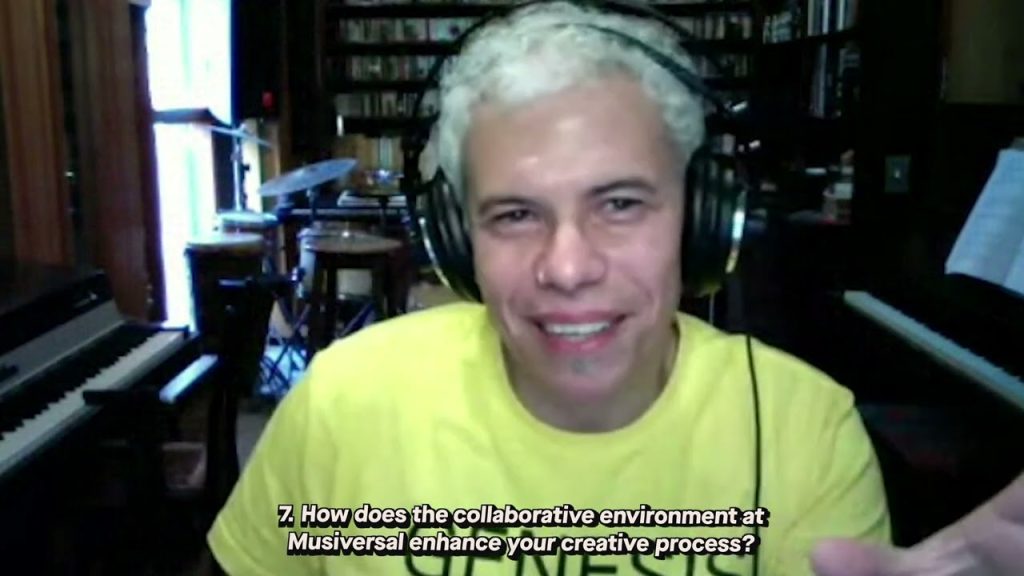
Consider the collaboration between classical musician Yo-Yo Ma and bluegrass fiddler Stuart Duncan in the album “The Goat Rodeo Sessions.” Their blend of classical and bluegrass elements resulted in a Grammy-winning project that expanded the audience of both genres. Such collaborations exemplify how musicians can introduce audiences to new sounds, creating music that not only surprises but captivates.
4. Enhanced Skill Development
Working alongside other musicians allows individuals to learn from one another, leading to personal growth and improvement. Collaborators can teach each other new techniques, share experiences, and even inspire each other to step out of their comfort zones. For example, a guitarist might pick up a new rhythm technique from a percussionist, which can contribute to more complex arrangements in their musical pieces. This exchange of skills fosters an environment where musicians grow collectively, enriching the overall creative process.
Peer learning is a powerful tool in the creative field. In bands or collaborative projects, musicians inherently become teachers and students. When jazz saxophonist John Coltrane worked with trumpeter Miles Davis, Coltrane expanded his improvisational skills, which later influenced his groundbreaking solo work. This kind of cross-pollination of skills is commonplace in successful collaborations.
3. Increased Motivation and Accountability
Creating music can sometimes feel like a solitary endeavor, making it easy for artists to lose motivation. Collaborating with others instills a sense of accountability that can invigorate the creative spirit. When musicians rely on each other for input and support, they are more likely to push through creative blocks and complete projects. Having a partner to share ideas with can turn an arduous task into an enjoyable experience, making the creative process feel less daunting and more collaborative. Additionally, working under deadlines together often fosters a productivity boost, leading to more completed works.
Consider the legendary collaboration of Lennon-McCartney in The Beatles. This partnership harnessed mutual accountability and inspiration, resulting in some of the most celebrated music in history. When one struggled with lyrics or melody, the other stepped in, fueling creativity and ensuring continual progress. Their success showcases how artist duos can drive each other to maintain high standards and motivation.
2. Innovative Problem-Solving
Collaborative efforts have a magical quality of bringing together different perspectives, which can be particularly beneficial when faced with creative challenges. Musicians can find themselves stuck in a creative rut, but by brainstorming together, they can approach problems from multiple angles. This leads to innovative solutions that might not have surfaced during solo endeavors. In fact, many iconic tracks have emerged from spontaneous jam sessions when artists can let go of their routine thought processes and embrace new possibilities through teamwork.
Take, for example, the collaboration between David Bowie and Brian Eno, which produced the “Berlin Trilogy” albums. Their experimental approach led to ambient soundscapes and innovative recording techniques, which were groundbreaking at the time. This partnership allowed them to challenge and expand traditional music production boundaries, showcasing how collaboration can lead to pioneering results.
1. Creation of Unique Identity and Brand
The collaboration between musicians often results in the development of a distinct artistic identity that stands out in the crowded music market. When musicians with different styles come together, they can create a hybrid sound that represents an entirely new musical entity. Examples of this can be found in supergroups like The Traveling Wilburys, where established artists from diverse musical backgrounds join forces, resulting in brand-new sounds and an appealing identity that captivates fans across genres. This unique amalgamation not only enhances the creative process but also fortifies their presence in the industry.
Such collaborations can also be seen in modern acts like Silk Sonic, where Bruno Mars and Anderson .Paak combined their strengths to create a retro yet fresh sound that resonated with audiences globally. By leveraging their distinct talents, they managed to create an identity that is both familiar and innovative, appealing to a broad spectrum of listeners.
In conclusion, the collaboration between musicians presents invaluable opportunities for creative enrichment. From diverse influences and skill development to enhanced motivation and innovative problem-solving, the benefits of working together are manifold. Lastly, the formation of a unique identity can redefine artistic trajectories and carve out niches in the competitive musical landscape. So the next time you find yourself with a creative block, consider reaching out to a fellow musician and explore the magic that collaboration can unveil!
This text captures the diverse advantages and transformative power of musical collaboration, illustrating each point with real-world examples and a narrative that engages and informs readers.
| Collaboration Type | Key Characteristics | Advantages | Challenges | Ideal Participants |
|---|---|---|---|---|
| Songwriting Duos | Two artists combining their unique lyrical and musical styles. | Fosters creativity through diverse input, often resulting in richer songs. | May lead to creative disagreements or conflicts over vision. | Lyricists and composers looking to blend genres. |
| Band Collaborations | Various musicians working together to create a cohesive sound. | Encourages experimentation with different musical influences and styles. | Requires significant coordination and compromise in sound direction. | Musicians from diverse backgrounds aiming for a unique fusion. |
| Online Collaborations | Musicians working remotely, often using digital tools and platforms. | Broadens the pool of talent and ideas, transcending geographical barriers. | Technological issues and discrepancies in vision can hinder the process. | Artists seeking to expand their reach beyond local scenes. |
| Genre Crossovers | Artists from different genres collaborate to create innovative sounds. | Leads to groundbreaking music that can attract diverse audiences. | Merging styles can sometimes dilute the essence of each genre. | Musicians who are open to exploring and pushing conventional boundaries. |
The process of collaboration among musicians is not a mere exchange of ideas—it is a powerful journey where creativity flourishes. Through different types of collaborations, whether it be songwriting duos, band efforts, digital interactions, or unconventional genre crossovers, the resulting innovations significantly contribute to the musical landscape. Songwriting duos exhibit a creative synergy where each artist brings a distinct perspective, making the collaborative effort not only enriching but often resulting in captivating lyrical themes and melodies. This dualistic input can elevate songs from the ordinary to the extraordinary. However, it’s essential to recognize that this form of collaboration can occasionally lead to friction if the contributors have conflicting artistic visions.When musicians come together in bands, the diverse array of musical backgrounds facilitates the creation of a sound that is truly unique. This environment nurtures experimentation and allows for creative exploration to flourish. However, it may demand considerable effort to align with each band member’s style, which could lead to compromises that test the strength of the group’s cohesion.In today’s digital age, online collaborations offer remarkable opportunities for artists worldwide to unite, breaking down geographical barriers. These virtual partnerships enable musicians to access a wide range of ideas and skills, enriching their creative outputs. Yet, the reliance on technology can pose challenges, including the risk of miscommunication or divergence from a shared creative direction. Genre crossovers represent another exciting format of collaboration, where artists blur the lines between styles, creating groundbreaking music. This fusion can captivate diverse audiences while challenging established norms. However, there is a fine line where blending genres could risk losing the essence of both.The landscape of musical collaboration is teeming with potential. The advantages outlined above illustrate how beneficial collaborations can be for the creative process, while also reminding us of the challenges that come with merging diverse talents and perspectives. Whether known for their fusion of styles or their deeply personal lyrical collaborations, the musicians who dare to collaborate often find themselves on a journey toward incredible innovation.
Frequently Asked Questions about Musician Collaboration
How does collaboration between musicians impact the creative process?
Collaboration between musicians often leads to a fusion of unique styles and perspectives, which can significantly enrich the creative process. By working together, musicians can challenge each other’s ideas and introduce new elements into their compositions. This dynamic interplay often results in a more diverse and innovative body of work that reflects a synergy not achievable in solo efforts.
What are some common challenges faced in musical collaborations?
While collaboration can be rewarding, it also presents a number of challenges. Differences in artistic vision or working styles can lead to conflict. Effective communication is crucial to navigating these issues. Musicians must find a balance between asserting their own ideas and being open to the input of others. Time constraints and scheduling conflicts can also hinder the collaboration process, demanding strong organizational skills.
Can collaboration among musicians improve songwriting skills?
Yes, collaboration has the potential to substantially improve one’s songwriting skills. Working with others exposes musicians to new techniques and approaches, broadening their skill set. Collaborators often share feedback and insights, providing valuable learning experiences that can refine songwriting abilities. This environment of continuous exchange and learning accelerates growth and skill development.
Are there successful examples of musical collaborations?
Indeed, history is rife with successful musical collaborations that have yielded iconic results. Examples include the partnership between Lennon and McCartney, whose collaboration in The Beatles produced timeless classics, and the genre-spanning projects like Queen collaborating with David Bowie on “Under Pressure.” Such collaborations often bring together diverse talents, creating unique soundscapes that resonate with wide audiences.
How does technology facilitate collaboration between musicians nowadays?
Technology plays a crucial role in facilitating modern musical collaborations. Tools like digital audio workstations (DAWs), online file-sharing services, and communication platforms enable musicians to work together regardless of geographical barriers. Virtual studios and real-time collaboration apps provide a platform to co-create music efficiently. This digital connectivity opens doors to international collaborations, fostering a global exchange of musical ideas.
Conclusion
In the world of music, the collaborative process serves as a dynamic force that can transform and elevate individual creativity into something remarkable. This exploration of how collaboration among musicians can enrich the creative process reveals a landscape brimming with possibilities, innovation, and unexpected outcomes.
First, collaboration introduces diverse perspectives and styles, merging them into novel musical expressions. Musicians bring their unique backgrounds and influences, generating a fusion that is often richer than solitary creation. One cannot underestimate how the cross-pollination of ideas can lead to groundbreaking compositions and fresh artistic directions.
Moreover, the synergy created in collaborative environments encourages experimentation and risk-taking, breaking the constraints that individual artists might face. It carves experiences where mistakes are transformed into learning opportunities, and unconventional ideas are given space to blossom. Such environments act as incubators for creativity, where new genres and innovative sounds can emerge.
The shared emotional and intellectual investments made by collaborating artists also foster deeper connections, which, in turn, can enhance the authenticity and emotional depth of the music produced. This emotional synergy, as highlighted, is integral for engaging with audiences on a profound level, ensuring that the music resonates beyond superficial enjoyment.
Ultimately, the process underscores a fundamental truth: in creative hobbies such as music, collaboration can be the catalyst that pushes boundaries and actualizes the full potential of creative expression. Whether through real-time jam sessions or digital collaborations across continents, the strength of musical partnerships lies in their ability to bring disparate elements together, crafting pieces that are greater than the sum of their parts. As musicians continue to seek out new collaborations, both the art and audience stand to gain, prompting us to consider what future discoveries await in this ever-evolving harmonization of minds and talents.

